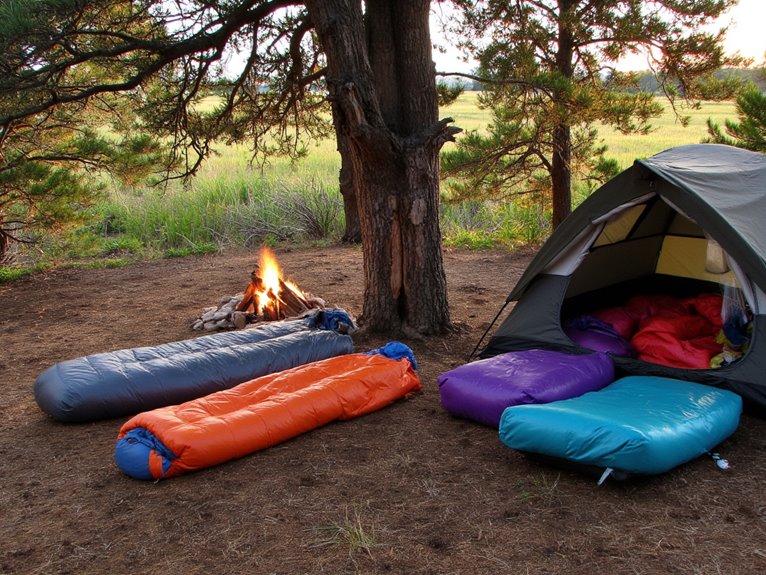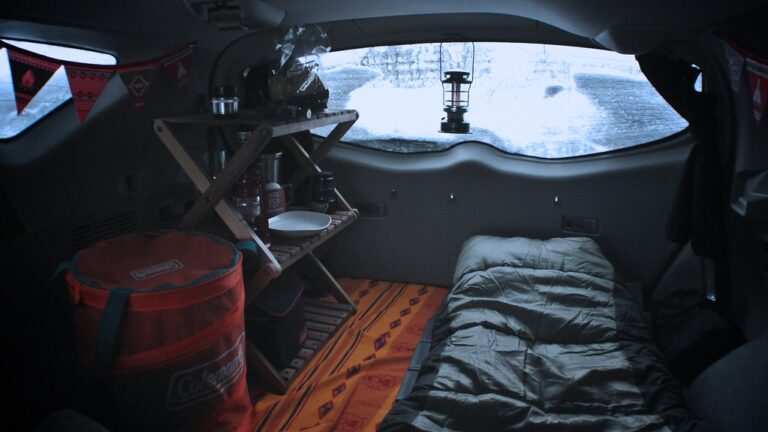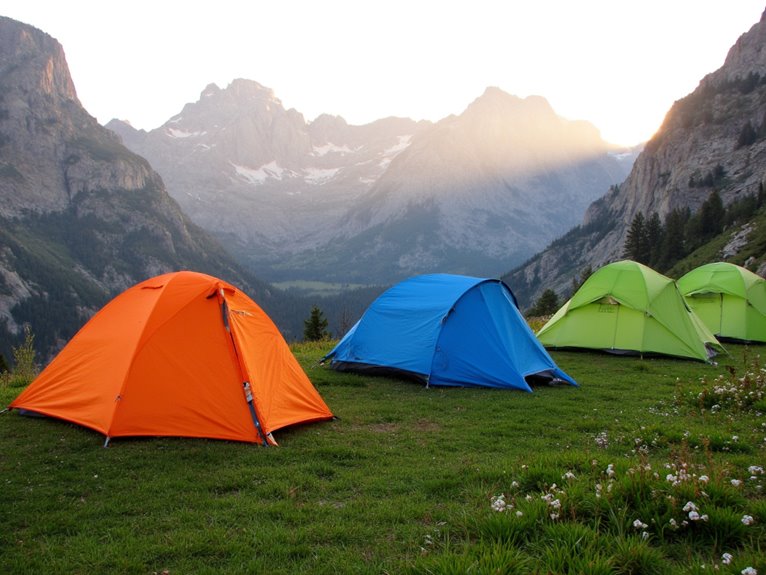Family Camping Sleep Systems: Doubles, Singles, and Tent Sharing
You’ll face an essential trade-off between double sleeping systems that save 30% floor space and individual setups offering personalized temperature control. Double bags provide shared warmth necessary for children while maximizing your tent’s usable area, but singles deliver superior comfort customization and sleep quality without disturbance. Consider your tent’s square footage, expected temperatures, and family preferences when choosing between air pads, self-inflating options, or foam systems. The following breakdown reveals specific performance data for ideal selection.
We are supported by our audience. When you purchase through links on our site, we may earn an affiliate commission, at no extra cost for you. Learn more. Last update on 10th December 2025 / Images from Amazon Product Advertising API.
Notable Insights
- Double sleep systems provide shared warmth for families and save 30% floor space while enabling conversion to singles.
- Individual single systems offer personalized temperature control, better hygiene, and undisturbed sleep for family members.
- Plan 20-40 square feet per person plus 15-20% extra for gear storage when selecting tent size.
- Air pads excel for backpacking comfort while self-inflating pads balance cushioning, insulation, and versatility for families.
- Insulated sleeping pads with R-values above 4.0 prevent ground heat loss; down bags are lightweight, synthetic works when wet.
Types of Sleep Pads for Family Camping
When selecting sleep pads for family camping, you’ll encounter five primary types, each engineered for specific camping scenarios and comfort requirements.
Air pads compress to Nalgene bottle size while delivering excellent comfort for backpacking families.
Self-inflating pads balance cushioning with insulation, making them versatile for car camping and backpacking trips.
Closed-cell foam pads offer superior durability and puncture-proof construction but sacrifice comfort and compactness.
Inflatable air mattress options provide maximum comfort for car camping but lack insulation and portability.
Camping cots elevate sleepers off the ground with excellent comfort but require significant storage space.
Air pads and self-inflating models need puncture repair kits for field maintenance, while foam pads require no such preparation.
Consider the R-value when choosing pads for cold-weather family camping, with R-2 suitable for summer and R-4+ required for winter conditions.
Benefits of Double Sleep Systems for Families
Double sleep systems offer compelling advantages that transform family camping dynamics through enhanced thermal efficiency, streamlined logistics, and improved comfort distribution.
You’ll benefit from shared warmth as two or more occupants generate combined body heat, creating temperatures notably warmer than individual bags. This thermal advantage proves essential for children, who struggle with temperature regulation during cold weather camping.
Weight efficiency becomes apparent with quality double bags weighing 4-5 pounds total—approximately 2-2.5 pounds per person. You’ll reduce packed volume while maximizing tent space utilization. The streamlined setup eliminates multiple zippers and separate configurations.
Family bonding improves naturally through physical closeness and cuddling within shared sleeping space. Children experience reduced nighttime anxiety while parents maintain easier access for comfort and safety checks throughout the night.
Many models feature detachable zipper designs that allow conversion from a double to two single bags, providing flexibility when family sleeping arrangements need to change throughout your camping trip.
Advantages of Individual Single Sleep Systems
While double sleep systems excel in certain camping scenarios, individual single sleep systems provide distinct advantages that make them the preferred choice for many families. You’ll gain superior personalization options through individual temperature ratings, insulation types, and bag shapes tailored for each camper’s needs. Hygiene benefits include reduced contamination risks and separate cleaning schedules.
| Feature | Single Systems | Impact |
|---|---|---|
| Temperature Control | Individual ratings | Personal comfort |
| Movement Freedom | No disturbance | Better sleep quality |
| Load Distribution | Balanced packing | Easier hiking |
| Hygiene Control | Separate cleaning | Reduced illness |
| Gear Selection | Custom specifications | ideal performance |
Single bags eliminate zipper entanglement while enabling independent ventilation adjustments. You can distribute weight across multiple packs and select specific insulation materials based on allergies or moisture concerns. Individual sleeping pads with varied R-value ratings ensure each family member receives optimal ground insulation tailored to their specific warmth requirements and sleeping conditions.
Comfort and Warmth Features to Consider
Beyond the basic choice between single and double systems, your family’s comfort depends on specific warmth and comfort features built into each component of your sleep system.
Temperature ratings determine performance boundaries. Look for sleeping bags rated 10-15 degrees below expected nighttime lows.
Sleeping bag materials directly impact thermal efficiency and weight. Down insulation provides superior warmth-to-weight ratios but loses effectiveness when wet. Synthetic fills maintain insulation properties in moisture but weigh more.
Layering systems maximize versatility. Combine heavy fleece or wool blankets under down quilts for enhanced warmth.
Insulated sleeping pads with R-values above 4.0 prevent ground heat loss. Features like removable wings and unzipping footboxes allow temperature customization.
Moisture-wicking liners made from silk or polar fleece maintain dry sleeping conditions while adding 5-10 degrees of warmth.
For families camping in unpredictable weather conditions, synthetic insulation offers consistent thermal protection even when exposed to moisture, losing only 20-30% of its insulation value compared to down’s potential 90% reduction.
Tent Space Planning and Sleep System Selection
Selecting the right tent size directly impacts how well your sleep systems will function and how comfortable your family camping experience becomes.
Standard recommendations suggest 20 square feet per person minimum, but 30-40 square feet provides ideal comfort for gear storage and movement.
Your tent layout planning should follow this approach:
- Measure your sleep systems – Air mattresses and cots require precise floor space calculations.
- Account for gear storage – Internal equipment storage adds 15-20% to space requirements.
- Consider traffic flow – Pathways between sleeping areas need 18-24 inches minimum width.
Space utilization becomes critical when selecting between doubles and singles.
Double sleeping systems save approximately 30% floor space compared to two singles, while tunnel tents offer customizable bedroom separation for privacy needs.
When packing sleeping bags for your family trip, compression sacks can reduce bulk by 30-40% compared to standard stuff sacks, maximizing remaining tent storage space.





